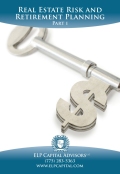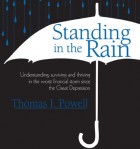For the past few weeks, financial news has been mixed on commercial real estate. On the one side, fear mongers like Randall Zisler expect crisis in the next few years. The meat of their argument is that high default rates and high unemployment will keep the market depressed. On the other side, high profile investors like Sam Zell say that the crisis is a myth.
I’m leaning toward Zell here, and agree with Sheryl Nance-Nash. She referenced a report that found commercial real estate markets are likely to bottom in 2010. Notice the verb there- bottom, not crash. The report calls 2010 through 2012 a “cyclical low” period in the market. In other words, there will be great opportunities for prudent investors in the next few years. As the rest of the economy picks back up, capital will flow into commercial real estate and bring prices back up to normal, or at least 70 percent of recent highs. The report is worth taking a look at.
The federal propensity for bail out clouds the issue. The FDIC announced last week that it would allow banks to report underperforming loans as performing. Many properties are worth less than the debt owed on them, and this legislation gives banks leeway for renegotiation. There is little evidence on how much refinancing is actually taking place. Instead of selling properties off, banks are keeping them on the books. As long as seller is kept from buyer, the market is on freeze. In the short-term this policy prevents a crisis by avoiding a panicked sell-off. However, the regulation prevents the market from functioning, perhaps even prolonging recovery in the long-term.
Fed Policy
Don Bauder at the San Diego Reader links, correctly, the troubled commercial real estate market in California with its budget problem. He then argues that recent stock gains are not based on ‘reality’ but a low federal funds rate:
“The Journal’s lead sub-headline Tuesday morning was “Cheap Money Sends Shares to 2009 High” — a stark warning that liquidity is buoying various markets, not reality. The Federal Reserve promises to keep interest rates around zero for the indefinite future. This emboldens investors to gamble…. — watch out.”
Under Greenspan, this was a fair argument. However, today we are at the ‘zero-lower bound’ of interest rate policy. Any increase in the funds rate is seen as devastating for recovery. It’s important to recognize that the source of growth today may not be interst rate policy- since monetary policy has become ineffective. Also, liquidity is welcomed by the Fed during recessionary periods.
Thomas J. Powell








